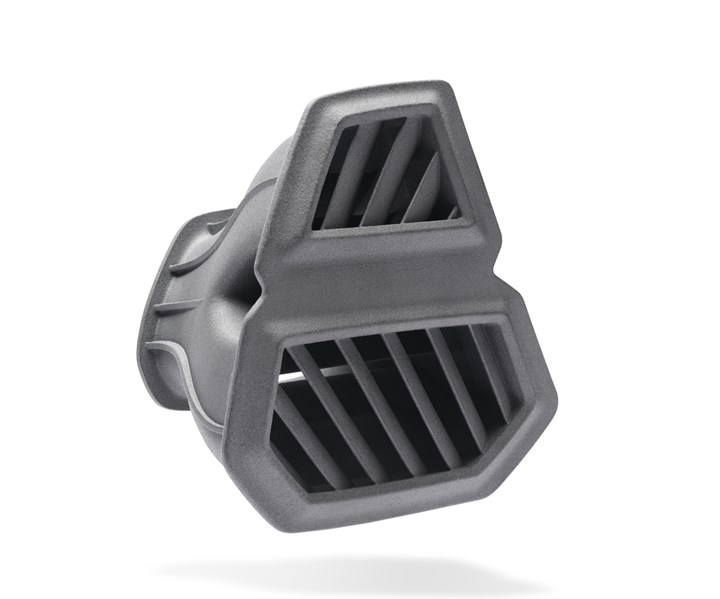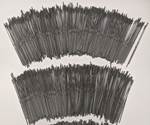HP and BASF Partner on New 3D Printing Polypropylene Material
A reported first of its kind industrial-grade polypropylene (PP) developed for HP’s Jet Fusion 5200 Series 3D printing system to accelerate production.

Door defroster vent used in the ventilation system of automobiles. Printed with HP 3D PP enabled by BASF.
BASF and HP have jointly launched a new polypropylene (PP) for additive manufacturing. The new HP 3D High Reusability PP enabled by BASF provides customers with a new additive manufacturing material that reportedly offers the same properties as commonly used PPs in injection molding, which has proven to have nearly unlimited use.
With its excellent chemical resistance, low moisture absorption, and long-term durability, PP is ideal for piping, fluid systems and containers, the companies stated. For example, automakers will be able to use the same PP for prototyping and production of final parts found in vehicles’ interior, exterior, and under-the-hood.
Developed in partnership with BASF for HP’s Jet Fusion 5200 3D Series, the new PP delivers high productivity and minimizes waste for industrial-level manufacturing. The companies claim that the new PP helps reduce waste by enabling up to 100% reusability of surplus powder.
The Forward AM by BASF team and HP are working with companies including Extol, GKN Powder Metallurgy/Forecast 3D, Henkel, Oechsler, and Prototal to jointly develop applications with the new PP on HP Jet Fusion 5200 3D printing systems.
“The introduction of PP is another important step as we collaborate on best-in-class materials to transform manufacturing,” said François Minec, Managing Director, BASF 3D Printing Solutions. “Our teams have worked closely to develop a high quality, sophisticated PP that fully leverages the advanced capabilities of HP’s Jet Fusion 5200 platform – truly a win-win for innovative companies investing in the shift to digital manufacturing.”
BASF is a foundational partner in HP’s 3D printing materials ecosystem and the two companies have collaborated on an array of materials including ULTRASINT TPU01 thermoplastic polyurethane released last year.
Related Content
-
Getting into Plastics Additive Manufacturing? Avoid these Six Common Errors
There are a lot of 3D printing technologies out there, and it’s not uncommon for processors new to additive manufacturing to get tripped up. Here are some typical snafus, along with advice on how to avoid them before you start making parts.
-
The Connector Conundrum: 3D Printed Mold Tooling’s Role in Innovation
ReelView Fishing faced an electronics obstacle in the development of its new technology for underwater video. Additive manufacturing for moldmaking allowed for the speed necessary to iterate to a solution. How inventors and invention will benefit from new ways of obtaining production-ready tooling.
-
Make Every Shot Count: Mold Simulation Maximizes Functional Parts From Printed Tooling
If a printed tool only has a finite number of shots in it, why waste any of them on process development?
















